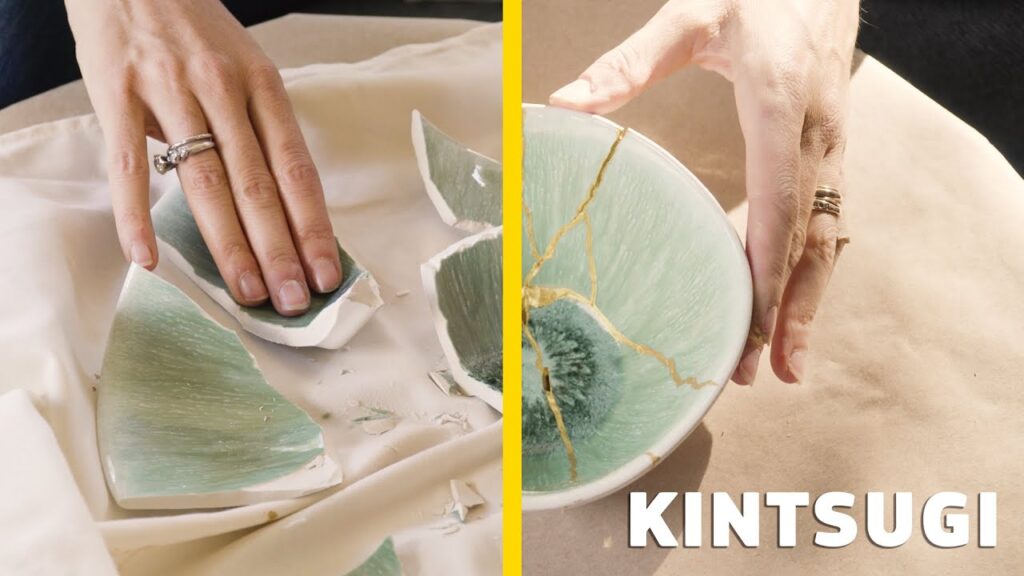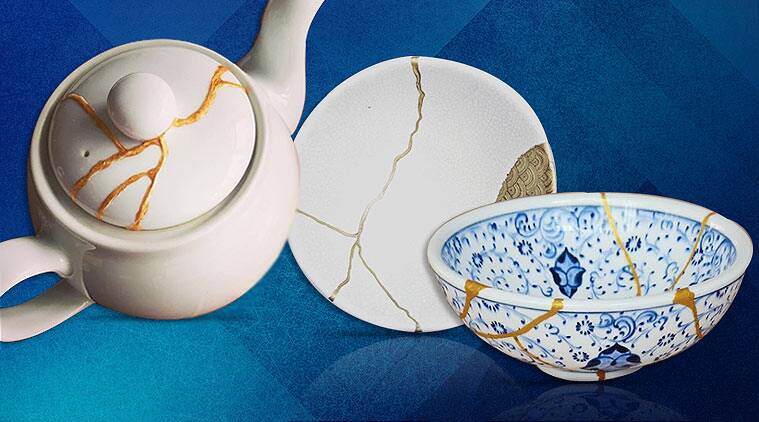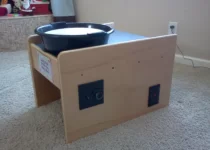How to kintsugi
There are a lot of people who perform different types of artwork and even with pottery, there are many types of techniques and ways through which you can make pottery and sculptures. But what happens when you break the pottery or any of the ceramics that you or anyone have?
In most places, people have a habit of throwing broken ceramics and pottery because of many reasons and one among them is also a spiritual reason which is that broken things are not good for the house. But there are also people who believe in repairing the things that can be repaired and the people of Japan are way ahead in this concept.
People of Japan follow a concept known as “Kintsugi” which means repairing broken things with gold, silver, or any other expensive material. This is done with these kinds of materials to enhance the beauty of the ceramic as well as to give the message that imperfections lead to beauty and enlightenment of the person.
Kintsugi is also done using the gold and silver mixtures to highlight the broken part as well as make it more attractive for the people, but one disadvantage of this is that you will not be able to use the ceramic for any other purposes like drinking or even keeping anything.

What makes Kintsugi different from other pottery forms?
Kintsugi itself is a whole different thing because here you are not making something new as you do in other pottery forms. Here you are repairing the things that are made through pottery and also making sure that the beauty of the ceramics is not compromised, they are enhanced only. Let us see what makes it different from others.
- Concept: The concept on which kintsugi is based is totally different and unique. This concept not only gives you a deep meaning in life but also helps people to overcome their flaws and mistakes. The concept is directly related to the life of a person in which a person has to break multiple times to look different and attractive. Without sacrifices and downfalls, no one can succeed and become a masterpiece and this is what ceramics look like when they are repaired completely.
- It takes a lot of time: The time you have to give to kintsugi is very high compared to the time that you have to give to pottery. Yes, making sculptures takes a lot of time because there you have to make different parts, but in kintsugi, you have to search for all the pieces and make sure that they are nicely stuck together when you apply the epoxy mixture to fix the ceramics.
- Technique: The technique of doing kintsugi is different from that which you are taught in the pottery field but there are many similarities as well in both things. In kintsugi, you need a stable and steady hand because one mistake will be repairing the ceramics, and you will again break that thing into many pieces. The more the pieces, the harder it will be to repair them.
- Even you have a limit on the size of the hole that you can fill with the epoxy. If the size is more than 60 cm, then it is not possible to repair it as well. You do not have a stable structure and even the space will not let it stick to other parts.
These are some of the reasons that make kintsugi different from pottery and also help you to better understand the concept as well as the technique, but after knowing all these things, there is still a question left and that is how to kintsugi.
If you are interested in knowing how to make simple pinch pot then follow our tutorial for the same in this post.

Steps that you need to follow when you are going to try kintsugi on a broken ceramic:
- Step 1– Before starting the whole process, the first thing that you need to do is collect all the pieces of the ceramic and make sure that it is not broken into many small parts. If the ceramic is broken in many small parts then you can not do kintsugi on it and repair it. If you are trying kintsugi for the first time and learning how to kintsugi and you do not have anything that you can repair, then you can also use a cheap ceramic that you do not need and break it carefully into some pieces.
- Step 2– You can skip this step if you already have a broken ceramic but when you do not have one, then just follow this step. Here you have to take the ceramic that you do not need and then place it on a thick towel, preferably a white one or depending on the color of the ceramic. Now, you have to cover the whole ceramic and break it using a hammer. You just have to give 2-3 impacts and need not use a lot of force because it might completely break the ceramic and you will not get what you wanted.
- Step 3– After breaking the ceramic or after collecting all the pieces of the ceramic in one thick towel, you need to make sure that you protect your hands from the sharp edges that are created when something breaks. Even with the pieces, they can also hurt your hand. People who are experts in it also sometimes hurt themselves, so you have to take proper precautions and also you need not do everything in a hurry. It is a time-consuming process and you need to be prepared for it.
- Step 4– Buying the right kind of epoxy is very important because different kinds of epoxy have different properties and also take time to settle and get hard, so choose the right kind of epoxy. You can easily get it in the stores and if it is not available there, then you can just order it from the online stores and make sure you choose the right one and of the right brand. If you get confused, then take the help of someone who knows about it and then order.
- Step 5- Now, you have to start mixing the epoxy according to the instructions given on the packet or the manual that you get along with the kit or the packet. You also have to decide whether you have to mix the gold or silver mica powder with the epoxy, if yes, then mix it well with the epoxy. You have to take small quantities of epoxy each time because it dries very fast and if you make a lot of mixtures then it will get wasted. Using a cotton swab, mix everything property until you see the change in the color. if you want some funky art then you can also mix acrylics with your epoxy to give your ceramic cool looks.
- Step 6– This is the hardest part because here you have to choose the biggest parts that you can fix and also make sure that you start from the bottom of the ceramic. After getting the biggest parts together, leave it to dry and remove the extra mixture after attaching the parts.
- Step 7– After leaving the parts to get set and hard according to the time mentioned on the packet, you can start with the next pieces and keep repeating the process until all the parts are fixed properly.
- Step 8– You have to make sure to keep removing the extra mixture because once it gets hard, then it will be impossible to clean it from the ceramic. Finally, your kintsugi is completed.

Conclusion
Hope you were able to learn simple art of kintsugi to get your ceramic and pottery items repaired after they are broken without your awareness or by mistake by following the Japanese art of kintsugi which provides steps to join the pieces of broken artifact, kitchenware etc. easily with goof after looks.

Being associated with art and craft field since decades as a hobbyist and life long learner has given me an opportunity to learn many new things related to art, craft, paints and pottery which i am trying to share with your guys on this website. I have expertise of being professional painter and potter for the last 20+ years
I have learned mind blowing cool tips and insights which makes me a person with ability to improvise and come up with creative ideas and solutions to make stunning and impeccable art pieces of all types which are adored by people across the globe on this website and other platform.


